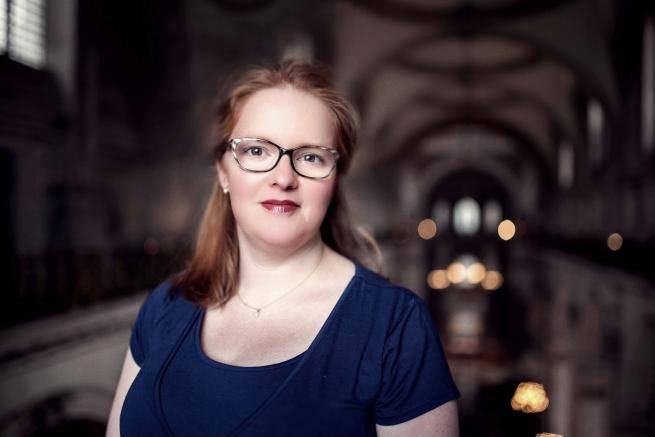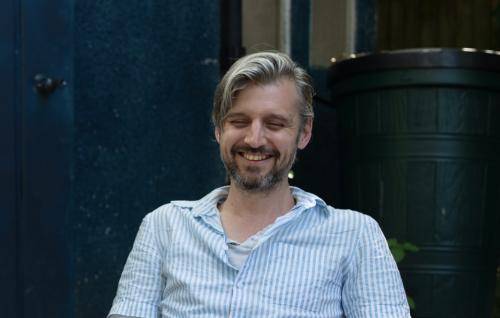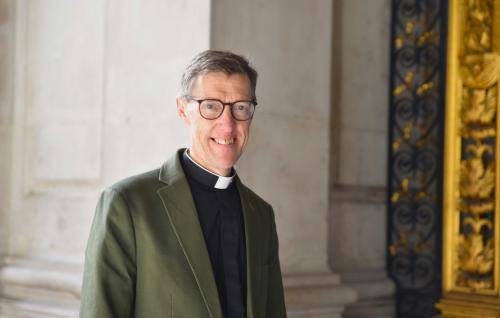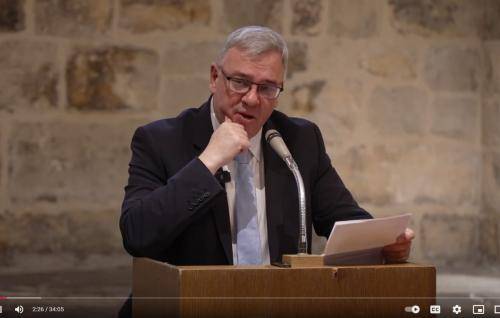Music for Good Friday and Easter
Music for Good Friday and Easter
Singer Carris Jones writes about music that illuminates the mystery and meanings of Good Friday and Easter.
Good Friday: 'My people, what have I done to you?'
My people, what have I done to you? How have I offended you? Answer me!
I led you out of Egypt, from slavery to freedom, but you led your Saviour to the cross.
Holy is God! Holy and strong! Holy immortal one, have mercy on us.
For your sake I scourged your captors and their firstborn sons, but you brought your scourges down on me.
I led you from slavery to freedom and drowned your captors in the Red Sea, but you handed me over to your high priests.
Hearing the story of the Crucifixion in the Cathedral on Good Friday, kneeling at the cross and looking up at it towering overhead, it is difficult to escape the feeling that sin, fear, horror, guilt, regret and sorrow are pushing at us with an almost tangible weight. In John Sanders’ Reproaches, written in the 20th century whilst he was Organist at Gloucester Cathedral, the composer uses the intense, anguished clash of the harmonies to depict just this.
The repetitions of the words “My people, what have I done to you?” build emotional intensity, not just by getting louder, but also by using quieter music to confront us with our culpability and the pain caused by our actions. The prayer to God for forgiveness (Holy is God!) is much simpler harmonically, and the stories of humankind’s abandonment of God simpler still in one line of music. The swapping between these three styles gives this piece extraordinary emotional power. To perform this is an extraordinary full-body experience – the physical demands of sustaining the long musical lines powerfully at this intensity can make your body feel much like it does after a prolonged bout of sobbing.
This music enables us to find a way into this difficult emotional space – to experience some of these difficult thoughts, to consider the impact of the things we do when we fail to be our best selves, but also to lead us back from the despair of it all and resolve to do better. The temptation to shy away from the difficulty of this is strong – but the darkness of Good Friday makes the light of the resurrection all the more blinding, and to suppress one is to dim the other.
Alleluia, Alleluia
I saw water flowing out of the Temple, from its right side, Alleluia:
And all to whom this water came were saved,
And they shall say:
Alleluia, Alleluia.
Sir James MacMillan’s gigantic piece Vidi Aquam starts very small – as the voices enter they trickle and tumble around each other like tiny rivulets. As the other voices are added to the texture the sound of the movement of the water continues and builds to a rushing roar, but the overall effect is a growing ecstasy that bursts forth as all the voices join to sing Alleluia. Listen also for the shimmering of water that is no longer flowing but undulating, and for the still water that reflects beauty and light. Occasionally the water subsides and we hear snatches of the text – Ezekiel’s prophetic message of purification and its fulfilment as told to us in John’s Gospel as the soldiers pierce Christ’s side on the cross.
Vidi Aquam was commissioned in 2020 as a companion piece to Thomas Tallis’ masterly 40 voice work Spem in Alium. MacMillan took the same musical basis as Tallis - eight separate choirs of five voices and traditional historical ideas of counterpoint, where two or here up to forty separate lines of music have their own melodic trajectory but weave together to create harmony. From this he fashioned something altogether more modern – at once harking back to the music of the 16th century whilst also creating a hazy impressionistic sound picture.
It is tricky to perform, requiring 40 confident and capable singers. For all its compositional genius and virtuosic vocal writing, to my ears, Vidi Aquam is at heart an exploration in music of the myriad properties of water – cleansing, calming, powerful and ultimately unstoppable in its ability to sweep us away. At Easter we are reminded of the power of the water of baptism to do all of these things – to provide us with a new start, a fresh opportunity to live renewed and refreshed as Christians in the light of the Resurrection.
All the Ends of the Earth
Let us now sing the melody of Alleluia
In praise of the eternal king let this assembly resound Alleluia
Then let heavenly choirs on high sing Alleluia.
Let the company of the blessed in the fields of paradise sing Alleluia.
Yea, let the glittering shining lamps of the stars raise their high Alleluia.
All the ends of the earth have seen the salvation of our God.
Rejoice in the Lord, the whole earth.
The Lord has made known his salvation:
He has shown his righteousness in the sight of the people.
Certain words seem to have an intrinsic power of their own. Alleluia – based on the Hebrew Hallelu-jah and meaning ‘Praise God’ – is one such. The urge to shout and sing for joy is programmed into the very vowels and consonants of the word – the combination of open round ‘ah’ and the ‘Ls’ are present in the ululation of celebration in human society across the world going back thousands of years.
Judith Weir explores every possible colour of this in her work All the Ends of the Earth. It is based on a 12th century musical technique called organum which takes a single melody line and then weaves around it, often improvising.
In this piece the lower voices take the melody and the upper voices dance and cascade around it, sometimes alone or in small groups, fizzing and bubbling with happiness. The voices are accompanied by a harp and percussion ensemble – giving the music texture and punctuation reminiscent of the musical tradition of Gamelan (Indonesian percussion). The merging of these styles from 12th century Notre Dame to the sounds of Southeast Asia create a timelessness to the music – but also a joyful aural kaleidoscope that really does sound like all the ends of the earth might be singing Alleluia!
Rise heart; thy Lord is risen
Rise heart; thy Lord is risen. Sing his praise
Without delays,
Who takes thee by the hand, that thou likewise
With him may’st rise;
That, as his death calcined thee to dust,
His life may make thee gold, and much more, Just.
Awake, my lute, and struggle for thy part
With all thy art.
The cross taught all wood to resound his name
Who bore the same.
His stretched sinews taught all strings, what key
Is best to celebrate this most high day.
Consort both heart and lute, and twist a song
Pleasant and long:
Or since all music is but three parts vied,
And multiplied;
O let thy blessed Spirit bear a part,
And make up our defects with his sweet art.
George Herbert’s poem Easter is a highly personal exploration of humble adoration. It is thought that Herbert was himself an accomplished musician. Here he muses on his lute, made of wood and tightened animal gut strings, as a symbol of the wood of the Cross and the body of Jesus, sinews stretched out as he opens his arms wide for the world’s salvation.
He encapsulates the service of the church musician – that God is present in our very bodies and our instruments, that we can but offer our best efforts and trust in the Spirit to do the rest.
Vaughan-Williams had a fascination for the music and poetry of late 16th and early 17th century England – nowhere more elegantly expressed than in his Fantasia on a Theme by Thomas Tallis which takes a 16th century hymn tune and reimagines it.
His setting of Easter (the first of his Five Mystical Songs) similarly takes Herbert’s early 17th century poem as its base, choosing to give most of the work to a baritone soloist is a nod to the intimacy of the poetry – a highly personal statement of humble adoration. The pitch at which a baritone sings is closest to that of ordinary human speech and this can make the words easier to understand. The choral part serves to gild the solo line, elevating it just as the blessed Spirit takes the poet’s best imperfect human efforts and transforms them into something altogether greater. The accompaniment (here arranged for organ by St Paul’s acting sub-organist Martin Ford) is in constant motion – the racing pulse of a heart that is truly raised in ecstatic joy!








